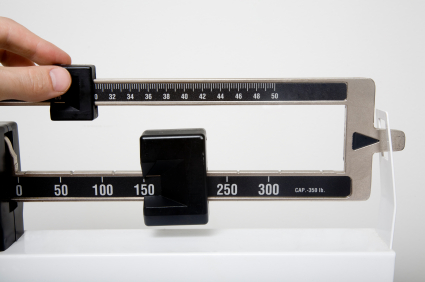This Is Going To Take a While
August 8, 2011Why Canadians With a Variable-Rate Mortgage Should Put Ben Bernanke on Their Christmas Card List
August 15, 2011For a lender, bigger is not always better.
The larger a mortgage gets, the greater the lender’s potential loss if the borrower defaults.
The higher the purchase price of a house, the fewer potential buyers it has, making it more vulnerable to market corrections and more difficult to unload if it has to be seized and sold.
In the world of lending, where the return of capital always takes priority over the return on capital, large mortgage loans come with increased risk, and as such, are subject to greater scrutiny.
To offset this increased risk, lenders will use some variation of a sliding scale to reduce a loan in proportion to a property’s value when it exceeds a certain dollar amount. Today’s post will explain how these sliding scales work and will offer some suggestions to help ensure that you get the full bang you deserve for your higher-than-average-size mortgage buck.
Definition of a large loan: If you live near a major urban centre, lenders consider a mortgage in the $750,000 range to be a large loan and if you need to borrow more than that, they will invoke a sliding scale to limit their potential loss. (If you live in a rural setting, a mortgage over $500,000 is often considered a large loan.)
When the purchase price of a property is more than $1 million, borrowers must make down payments of at least 20%. While it may seem counterintuitive at first, these types of mortgages (called conventional loans) are actually riskier for lenders than loans with down payments of less than 20% (called high-ratio loans). That’s because hi gh-ratio loans must be insured against default (by CMHC for example) and once they are, a lender’s potential for loss is minimized.
gh-ratio loans must be insured against default (by CMHC for example) and once they are, a lender’s potential for loss is minimized.
By comparison, conventional loans on properties with purchase prices of more than $1 million cannot be insured against default. In the lender’s eyes, this restriction more than offsets the fact that a conventional borrower is making a larger down payment, and to mitigate against the potential for increased loss, lenders limit their exposure by applying sliding scales.
Let’s illustrate how sliding scales work with an example.
Assume that you buy a house for $1,400,000 and want to make a down payment of 20% of the purchase price, which in this case would be $280,000.
Your loan cannot be insured against default, because your purchase price exceeds $1 million, so the lender applies a sliding scale to your maximum eligible loan amount to reduce their potential for loss. Instead of requiring you to put down 20% of the purchase price (the technical minimum for an uninsured loan), the lender agrees to lend you 80% of the first $750,000 of the purchase price, but only 60% of the remaining $650,000 of the purchase price.
This is the sliding scale at work.
It is designed so that as a property’s price increases, the maximum loan amount offered decreases on a proportionate basis. In this example, while you wanted to borrow $1,120,000 (80% of the property’s value), the lender is only offering to lend you $990,000 (71% of the property’s value). That means that your down payment needs to increase from $280,000 to $410,000.
Sliding scales are used by most lenders but the specific formulas they use can vary widely. For example, one Canadian lender will offer 80% financing on the first $1.5 million of purchase price (and 60% financing on anything over that threshold), while another lender doesn’t use a sliding scale at all as long as the mortgage amount doesn’t exceed $1.5 million.
If you want to maximize the size of your mortgage, an experienced independent mortgage broker who works with a multitude of lenders can guide you to ones that offer the most sliding-scale flexibility.

Here are a few other points to keep in mind if you are seeking a large mortgage amount:
- Pay special attention to the terms and conditions that come with your mortgage, especially your prepayment penalties. Larger loan amounts magnify the differences in the penalties charged by different lenders.
- Large loans have to be escalated up the ranks for management approval so expect lenders to take an extra day (or two) to get your approval back. If you anticipate tight timelines, get pre-approved first, which is a good move for lots of other reasons anyway.
- While lenders are more cautious with large loans, you should still be offered the best rates in the market (they may take a bit more work, but in the long run, large loans can still be more profitable for lenders). If you want to know what the best rates are, shop around.
 One other important point to keep in mind. When real estate prices flatten or drop, lenders can become much more conservative when underwriting higher-end real estate. As such, there can be wide disparity in the value different lenders will assign to a property. Partnering with an independent mortgage broker will help ensure that you and your property are matched with the lender who is offering the best fit for your particular situation, regardless of whether the market is hot or cold.
One other important point to keep in mind. When real estate prices flatten or drop, lenders can become much more conservative when underwriting higher-end real estate. As such, there can be wide disparity in the value different lenders will assign to a property. Partnering with an independent mortgage broker will help ensure that you and your property are matched with the lender who is offering the best fit for your particular situation, regardless of whether the market is hot or cold.
An individual lender’s appetite for large loans may fluctuate, but to a mortgage broker at least, bigger is still always better.







